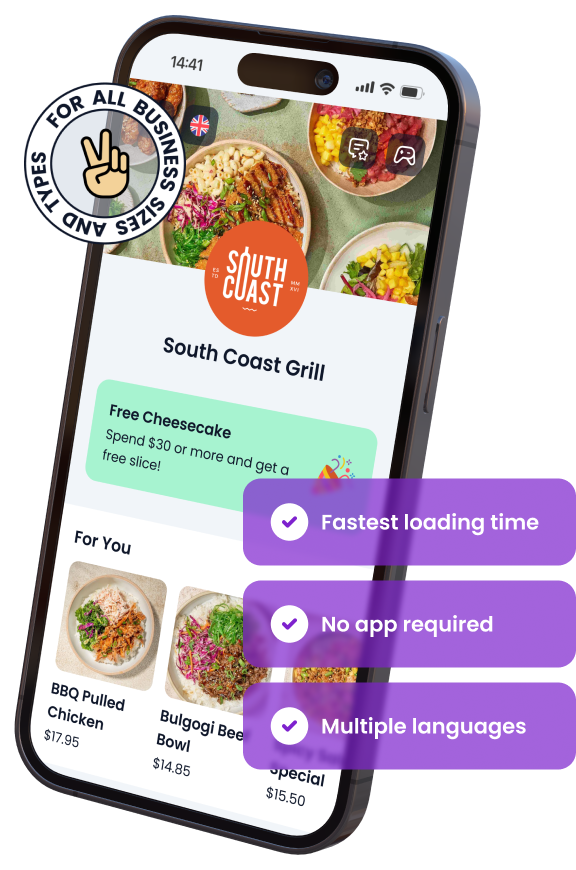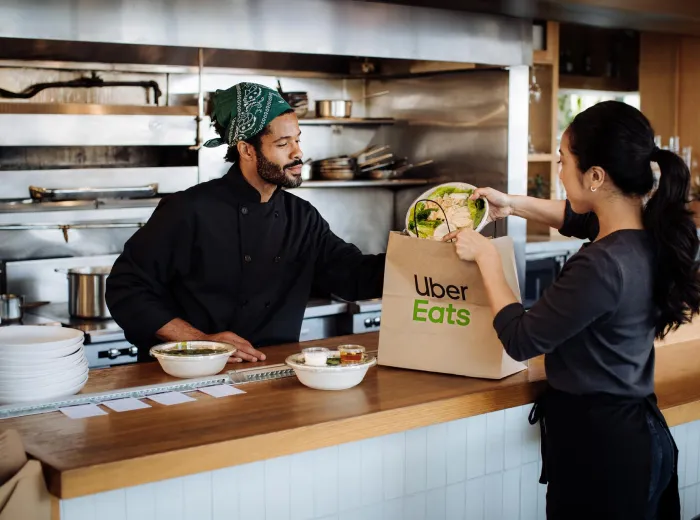

15 Steps to Take Before Opening a Restaurant in Leeds
Opening a restaurant in Leeds can be an exciting venture, but it requires careful planning and execution to turn your dream into a thriving business. As one of the UK’s most vibrant cities, Leeds boasts a bustling food scene with a mix of traditional British fare, international cuisines, and trendy dining experiences. With the right approach, your restaurant can carve out a unique space in this competitive market.
From selecting the ideal location to navigating permits and licenses, every step is crucial to your success. Whether you’re bringing a fresh concept to life or expanding an existing brand, understanding Leeds’ local market and aligning your operations with customer preferences will be key. This guide will walk you through the essential steps to help you start strong and set up your restaurant for long-term success.
Ready to dive into the details? Let’s explore the steps that will take your restaurant from concept to reality in the vibrant city of Leeds.
Research and Define Your Restaurant Concept
Defining a clear and compelling restaurant concept is the foundation of your business. It sets the tone for your brand, influences your target audience, and guides every aspect of your operations, from the menu to the decor. To establish a concept that resonates with Leeds diners, you’ll need to conduct thorough research and align your vision with market opportunities.
Identify Your Target Market
To build a restaurant that appeals to customers, you must first understand who your ideal diners are. Consider demographics, preferences, and dining habits in Leeds.
- Key factors to explore:
- Age groups (students, families, professionals, retirees)
- Income levels and spending habits
- Dining preferences (casual, fine dining, quick service)
- Dietary trends and needs (vegan, gluten-free, health-conscious)
By identifying your target market, you can tailor your menu, pricing, and ambiance to meet their expectations, ensuring a strong connection with your audience.
Analyze Competitor Restaurants in Leeds
Leeds is home to a dynamic mix of restaurants, offering a variety of cuisines and dining experiences. Studying your competition will help you uncover gaps in the market and avoid oversaturated niches.
- Steps to analyze competitors:
- Visit popular restaurants in your niche to evaluate their menu, pricing, and ambiance.
- Research online reviews and ratings to understand what customers appreciate and where competitors fall short.
- Identify any emerging trends or successful concepts that could inspire your unique approach.
By analyzing competitors, you can position your restaurant to stand out and deliver a fresh, desirable experience.
Choose a Unique Selling Proposition (USP)
Your USP is what sets your restaurant apart from the competition and gives customers a compelling reason to choose you. Whether it’s a signature dish, a themed ambiance, or exceptional customer service, your USP should be evident in every aspect of your business.
- Ideas for crafting your USP:
- Introduce a menu item with a twist, such as Yorkshire-inspired dishes with a modern flair.
- Emphasize sustainable and locally sourced ingredients.
- Offer a unique dining experience, like live music nights or interactive cooking demonstrations.
Clearly defining your USP ensures your restaurant resonates with diners and builds a loyal customer base eager to recommend your establishment.
Develop a Solid Business Plan
A well-crafted business plan serves as the blueprint for your restaurant, guiding every decision from financing to marketing. It provides a clear roadmap for success and helps you stay on track while navigating the challenges of opening and running a restaurant in Leeds. Here’s how to structure your business plan for maximum effectiveness.
Set Your Vision, Mission, and Goals
Start by defining the essence of your restaurant through your vision and mission statements. These will clarify your purpose and long-term aspirations.
- Vision Statement: Describe the ultimate goal of your restaurant. For example, “To become Leeds’ go-to destination for modern British cuisine with a sustainable focus.”
- Mission Statement: Outline how you plan to achieve your vision. For instance, “We will deliver exceptional dining experiences through fresh, locally sourced ingredients and outstanding customer service.”
- Set SMART Goals: Ensure your goals are Specific, Measurable, Achievable, Relevant, and Time-bound. Examples:
- Achieve a 20% profit margin within the first 12 months.
- Attract 1,000 loyal customers within the first six months.
Having a clear vision, mission, and goals ensures every decision aligns with your overall purpose and objectives.
Break Down Financial Projections and Budgets
Financial planning is critical to understanding your startup costs, managing cash flow, and ensuring profitability. Break down your finances into clear categories to avoid surprises.
- Startup Costs: Include expenses such as:
- Lease deposits
- Renovations and decor
- Kitchen equipment and appliances
- Initial inventory and staff training
- Ongoing Costs: Factor in monthly expenses like:
- Rent and utilities
- Salaries and wages
- Marketing and advertising
- Maintenance and supplies
- Revenue Projections: Estimate your expected sales based on:
- Average spend per customer
- Expected daily footfall
- Seasonal variations
Detailed financial projections help you secure funding and manage your resources effectively.
Outline Marketing and Operational Strategies
Your business plan should include comprehensive strategies to attract customers and run efficient operations. Focus on creating a strong presence in the competitive Leeds dining scene.
- Marketing Strategies:
- Develop an online presence with a professional website and active social media profiles.
- Utilize local SEO to appear in search results for “best restaurants in Leeds.”
- Partner with local influencers or food bloggers to spread the word.
- Operational Strategies:
- Establish clear workflows for kitchen and front-of-house staff.
- Implement technology, such as reservation systems and POS software, to streamline operations.
- Plan for contingency measures to handle unexpected challenges.
With a well-thought-out business plan, you’ll have a clear path to success and the confidence to navigate the competitive Leeds market.
Secure Financing for Your Restaurant
Securing adequate financing is a crucial step in turning your restaurant vision into reality. From covering initial expenses to managing cash flow, ensuring your finances are in order is essential for long-term success. Here’s how to approach this step effectively.
Calculate Startup Costs and Ongoing Expenses
Start by estimating the total amount you’ll need to launch and sustain your restaurant. Break these costs into two main categories for clarity.
- Startup Costs:
- Lease deposits and renovations
- Furniture, fixtures, and kitchen equipment
- Initial inventory and supplies
- Licensing and permit fees
- Marketing and branding setup (logo, website, etc.)
- Ongoing Expenses:
- Rent, utilities, and insurance
- Salaries and wages for staff
- Food and beverage costs
- Maintenance and operational supplies
By having a detailed understanding of your costs, you can determine how much financing you need and avoid potential shortfalls.
Explore Funding Options: Loans, Investors, and Grants
There are several ways to finance your restaurant, depending on your financial situation and business needs. Explore these options to find the best fit:
- Bank Loans: Approach local banks with a strong business plan to secure traditional financing.
- Private Investors: Partner with investors who see potential in your concept and are willing to fund it in exchange for equity or returns.
- Grants and Incentives: Look for government or local council grants aimed at supporting small businesses in Leeds.
- Crowdfunding: Leverage platforms like Kickstarter to raise funds from your community while building early awareness for your restaurant.
Diversifying your funding sources can provide stability and reduce financial risks.
Create a Financial Cushion for Emergencies
Unexpected expenses are inevitable in the restaurant business, so it’s vital to have a safety net to manage surprises without disrupting operations.
- Emergency Fund Tips:
- Set aside at least 10-20% of your total budget for unforeseen costs.
- Regularly review your financial performance to identify potential shortfalls early.
- Use cash flow management tools to track income and expenses effectively.
By preparing for the unexpected, you’ll be better equipped to handle challenges and keep your restaurant running smoothly.
Securing the right financing sets a strong foundation for your restaurant’s success, giving you the resources needed to launch confidently and sustain your growth.
Find the Perfect Location in Leeds
Choosing the right location is one of the most critical decisions when opening a restaurant in Leeds. A well-chosen site can significantly impact foot traffic, customer convenience, and overall success. Here’s how to find the ideal spot for your restaurant in this bustling city.
Evaluate High-Traffic Areas and Accessibility
A prime location with high visibility and accessibility can drive consistent footfall to your restaurant.
- Look for High-Traffic Areas:
- City centers like Briggate or The Headrow, known for their shopping and dining appeal.
- Busy streets near universities or office districts to attract students and professionals.
- Accessibility Considerations:
- Ensure your location is easy to find and has parking or public transport access.
- Look for proximity to landmarks or popular attractions that draw crowds.
Choosing a well-connected area increases the likelihood of attracting diverse customer segments.
Check Local Demographics and Neighborhood Fit
Leeds is home to diverse neighborhoods, each with unique customer bases and dining preferences. Research the demographic trends to ensure your concept aligns with the area.
- Understand the Local Demographics:
- Areas like Headingley may attract students seeking affordable and casual dining options.
- Affluent neighborhoods like Chapel Allerton might favor fine dining or upscale cafes.
- Match Your Concept to the Neighborhood:
- If your restaurant caters to families, look for residential areas with parks or schools nearby.
- For trendy or niche concepts, consider hip locations like the Northern Quarter.
Understanding the local population helps you tailor your offerings and brand to meet customer expectations.
Negotiate Lease Terms and Assess Licensing Zones
Once you’ve identified a potential location, it’s essential to evaluate the legal and financial aspects of the property.
- Negotiate Favorable Lease Terms:
- Seek flexible lease durations to mitigate long-term risks.
- Clarify who covers expenses for repairs and maintenance.
- Include provisions for rent adjustments in case of unforeseen circumstances.
- Verify Licensing and Zoning Requirements:
- Ensure the property is zoned for restaurant use and meets local regulations.
- Check restrictions on serving alcohol, operating hours, or outdoor seating.
Properly assessing these factors helps you secure a location that aligns with your operational needs and long-term goals.
Finding the perfect location in Leeds requires balancing visibility, accessibility, and community fit. By carefully evaluating these aspects, you’ll set your restaurant up for success in the city’s vibrant dining scene.
Understand Legal and Regulatory Requirements
Navigating legal and regulatory requirements is essential when opening a restaurant in Leeds. Compliance with local laws ensures smooth operations and helps avoid costly fines or disruptions. Here’s a guide to understanding the key legal and regulatory aspects.
Obtain Necessary Permits and Licenses in Leeds
Operating a restaurant requires specific permits and licenses to comply with local government and council regulations.
- Key Licenses and Permits to Secure:
- Food Business Registration: Register your restaurant with Leeds City Council at least 28 days before opening.
- Alcohol License: Apply for a premises license if you plan to serve alcohol, and ensure your staff holds personal licenses.
- Music License: Secure a PRS for Music and PPL license if you plan to play music for customers.
- Outdoor Seating License: Obtain permission for outdoor dining areas, if applicable.
Each license has its own requirements, so start the application process early to avoid delays.
Comply with Health and Safety Regulations
Adherence to health and safety laws protects your staff and customers while ensuring your restaurant meets legal standards.
- Health and Safety Steps to Follow:
- Conduct a risk assessment to identify potential hazards and create an action plan.
- Provide adequate training to staff on food handling, fire safety, and workplace safety.
- Display necessary signage, such as fire exit instructions and first-aid information.
Following these regulations not only ensures compliance but also builds customer trust in your establishment.
Meet Food Hygiene Standards and Alcohol Licensing Rules
Maintaining high food hygiene standards is critical for customer safety and securing good ratings during inspections.
- Food Hygiene Best Practices:
- Implement a robust HACCP (Hazard Analysis and Critical Control Points) system.
- Train staff to store, prepare, and serve food safely to avoid contamination.
- Schedule regular cleaning and maintenance of kitchen equipment.
For alcohol licensing:
- Follow Challenge 25 guidelines to verify customers’ age when serving alcohol.
- Ensure all alcohol-serving staff understand their responsibilities under the Licensing Act 2003.
Compliance with these regulations will help you pass inspections and create a safe, enjoyable dining environment.
Understanding and adhering to legal requirements is fundamental for opening and running a successful restaurant in Leeds. By staying informed and proactive, you can avoid legal hurdles and focus on growing your business.
Create a Memorable Restaurant Menu
Your menu is the heart of your restaurant and a key factor in attracting and retaining customers. A well-designed menu not only reflects your restaurant’s concept but also encourages diners to try your offerings and keeps them coming back for more. Here’s how to create a menu that stands out in Leeds’ competitive dining scene.
Balance Popular and Unique Dishes
A successful menu strikes a balance between familiar favorites and innovative offerings that capture your restaurant’s personality.
- Include Popular Staples: Ensure your menu features dishes that appeal to a wide audience, such as comfort foods or classics that are well-loved in Leeds.
- Incorporate Unique Dishes: Add a twist to traditional recipes or introduce specialty items that reflect your restaurant’s theme. For example:
- Modern takes on Yorkshire puddings
- Creative vegan or gluten-free options
- Seasonal chef’s specials
- Test New Ideas: Use soft launches or limited-time specials to gauge customer interest in new dishes.
Balancing popular and unique items ensures your menu appeals to both adventurous diners and those seeking familiar tastes.
Price Menu Items for Profitability
Menu pricing should reflect the quality of your offerings while maintaining profitability and competitiveness.
- Calculate Costs Carefully:
- Determine the cost of ingredients for each dish.
- Factor in overheads like labor, utilities, and marketing.
- Set Pricing Margins: Aim for a food cost percentage between 25% and 35%, depending on your restaurant type.
- Consider Market Positioning:
- Offer competitive prices for casual dining or premium rates for fine dining.
- Introduce value-driven options like meal deals or family platters.
Strategic pricing ensures your menu generates revenue while meeting customer expectations.
Incorporate Seasonal and Local Ingredients
Using fresh, seasonal, and local ingredients enhances the quality of your dishes and aligns with sustainable practices.
- Benefits of Seasonal Menus:
- Improved flavor and freshness of ingredients.
- Cost savings due to local availability.
- Opportunities to highlight unique dishes throughout the year.
- Collaborate with Local Suppliers: Partner with farms and producers in the Leeds area to source fresh produce, meats, and dairy.
- Highlight Local Flair: Incorporate regional ingredients like Wensleydale cheese or rhubarb into your dishes.
Emphasizing local and seasonal elements helps establish your restaurant as an authentic and environmentally conscious choice.
A memorable menu is more than just a list of dishes—it’s a tool to communicate your restaurant’s story, values, and culinary creativity. By balancing popular items, unique offerings, and thoughtful pricing, you’ll create a menu that resonates with diners and drives repeat business.
Design an Efficient and Inviting Space
The design of your restaurant plays a crucial role in creating a memorable dining experience and ensuring smooth operations. A well-planned space not only enhances the customer experience but also maximizes efficiency for your staff. Here’s how to design a space that’s both functional and inviting for your restaurant in Leeds.
Optimize the Layout for Customer Flow and Comfort
A smart layout ensures that customers and staff can move easily while maintaining a comfortable and welcoming atmosphere.
- Dining Area Considerations:
- Space tables and chairs to allow for privacy and easy movement.
- Arrange seating to accommodate different group sizes, from couples to large parties.
- Ensure good visibility of key areas like the bar, entrance, or open kitchen (if applicable).
- Service and Kitchen Flow:
- Position service stations strategically to minimize staff travel distances.
- Design pathways for efficient food delivery and clearing without disrupting diners.
- Plan kitchen zones (prep, cooking, plating) to streamline operations.
A well-optimized layout improves both customer satisfaction and staff productivity.
Choose Furniture and Decor that Match Your Theme
Your furniture and decor should reflect your restaurant’s concept and create a cohesive atmosphere that resonates with your target audience.
- Furniture Selection:
- Prioritize comfort and durability for chairs, tables, and booths.
- Match materials and colors to your restaurant’s theme (e.g., wood and earthy tones for rustic, sleek finishes for modern).
- Decor and Lighting:
- Use art, signage, or murals to add personality and reinforce your branding.
- Adjust lighting to suit the mood—bright for casual dining or dim for intimate settings.
- Incorporate plants, textiles, or accents that make the space warm and inviting.
Thoughtful furniture and decor choices create an environment that enhances the dining experience.
Ensure Kitchen Design Meets Operational Needs
The kitchen is the backbone of your restaurant, and its design is critical to efficiency and food quality.
- Essential Kitchen Design Tips:
- Use a “work triangle” layout, connecting key areas like storage, preparation, and cooking for smooth workflow.
- Invest in proper ventilation and cooling systems to maintain a safe and comfortable workspace.
- Choose durable, easy-to-clean surfaces for countertops and floors to ensure hygiene and durability.
- Storage and Accessibility:
- Include ample storage space for ingredients, utensils, and equipment.
- Organize shelves and racks for easy access to frequently used items.
A well-designed kitchen minimizes delays and ensures consistent food preparation, even during peak hours.
Designing an efficient and inviting space sets the stage for a positive first impression and seamless daily operations. By focusing on layout, decor, and kitchen functionality, you can create a restaurant environment that delights both customers and staff.
Invest in the Right Equipment and Technology
Equipping your restaurant with the right tools and technology is essential for smooth operations, enhanced customer experience, and long-term success. From kitchen appliances to digital systems, thoughtful investments can boost efficiency and save costs. Here’s how to make smart decisions for your restaurant in Leeds.
Purchase High-Quality Kitchen Appliances
The backbone of any restaurant is its kitchen, and reliable appliances are key to delivering consistent food quality.
- Essential Kitchen Equipment:
- Ovens, grills, and fryers suited to your menu.
- Refrigerators and freezers with sufficient capacity to store ingredients safely.
- Prep tools such as mixers, slicers, and food processors.
- Tips for Choosing Equipment:
- Opt for energy-efficient appliances to reduce utility bills.
- Look for durable, commercial-grade items to handle high-volume usage.
- Purchase warranties and consider maintenance packages for long-term reliability.
Investing in high-quality kitchen appliances ensures operational efficiency and helps maintain food standards.
Implement a Point-of-Sale (POS) System
A modern POS system is indispensable for managing sales, tracking inventory, and streamlining operations.
- Key Features to Look For:
- User-friendly interface for order processing and payment.
- Integration with inventory management to track stock levels in real time.
- Detailed reporting tools for monitoring sales performance and trends.
- Benefits of a POS System:
- Reduces order errors and speeds up transactions.
- Improves customer satisfaction with quick and seamless checkouts.
- Provides valuable data for making informed business decisions.
A reliable POS system simplifies operations and enhances the overall customer experience.
Consider Reservation and Delivery Management Tools
With dining habits evolving, reservation systems and delivery platforms are crucial for catering to diverse customer needs.
- Reservation Management:
- Use tools like OpenTable or ResDiary to manage bookings efficiently.
- Provide online reservation options to attract tech-savvy customers.
- Implement automated reminders to reduce no-shows.
- Delivery and Takeout Integration:
- Partner with platforms like Deliveroo or Uber Eats to expand your reach.
- Use integrated software to sync delivery orders with your kitchen workflow.
- Offer direct online ordering through your website to reduce third-party fees.
Leveraging these tools ensures you cater to dine-in and off-premise customers effectively.
Explore Additional Technology to Enhance Efficiency
Beyond the basics, advanced technologies can further optimize your restaurant’s operations and customer experience.
- Additional Tools to Consider:
- Digital menu boards or QR code menus for easy updates and cost savings.
- Customer loyalty programs integrated into your POS for repeat business.
- Staff scheduling software to improve labor management and reduce costs.
By adopting the right technology, you can stay ahead of industry trends and position your restaurant for long-term success.
Investing in high-quality equipment and modern technology not only boosts efficiency but also creates a seamless and satisfying experience for customers and staff alike. These strategic investments lay a strong foundation for your restaurant’s growth in the competitive Leeds dining market.
Build a Skilled and Motivated Team
Your restaurant’s success depends heavily on the people who bring your vision to life. A skilled and motivated team not only delivers excellent customer experiences but also ensures smooth operations. Building the right team starts with thoughtful hiring, effective training, and fostering a positive workplace culture. Here’s how to do it.
Hire Experienced Chefs, Managers, and Staff
Recruiting the right talent is essential for delivering high-quality service and maintaining operational efficiency.
- Key Roles to Fill:
- Chefs and Kitchen Staff: Hire individuals with experience in preparing your menu items and handling busy kitchen environments.
- Managers: Look for leaders who can oversee daily operations, manage staff, and handle customer concerns.
- Front-of-House Staff: Prioritize candidates with strong interpersonal skills for roles such as servers, hosts, and bartenders.
- Where to Find Talent:
- Advertise on local job boards, restaurant-specific platforms, and social media.
- Partner with Leeds-based hospitality schools or training centers for entry-level staff.
- Use employee referrals to attract trusted candidates.
Selecting experienced and passionate team members lays the groundwork for excellent customer service.
Create Training Programs for Consistent Service
Comprehensive training ensures that your staff understands your restaurant’s standards and operates as a cohesive team.
- Training Areas to Cover:
- Customer service protocols, such as greeting guests, handling complaints, and upselling menu items.
- Food preparation, hygiene, and safety practices for kitchen staff.
- Use of technology, including your POS system and reservation tools.
- Ongoing Training Opportunities:
- Schedule regular workshops or refresher courses to keep skills sharp.
- Encourage staff to participate in external training or certifications, such as food safety or mixology courses.
Effective training programs help maintain high standards and ensure consistency in every customer interaction.
Foster a Positive Workplace Culture
A motivated team thrives in a supportive and engaging work environment. Building a positive workplace culture not only boosts morale but also improves staff retention.
- Strategies to Build a Positive Culture:
- Recognize and reward exceptional performance through bonuses, employee-of-the-month programs, or public appreciation.
- Foster open communication and encourage staff to share feedback and ideas.
- Promote work-life balance by offering fair schedules and paid time off.
- Team Building Activities:
- Host team meals or outings to strengthen camaraderie.
- Celebrate milestones, such as birthdays or work anniversaries, to make employees feel valued.
A strong workplace culture translates into happier employees and a better experience for your customers.
Empower Staff to Grow and Take Ownership
Providing opportunities for growth motivates your team and encourages them to invest in the success of your restaurant.
- Growth Opportunities:
- Offer clear pathways for promotions, such as from server to shift leader or sous chef to head chef.
- Support professional development by subsidizing certifications or courses.
- Encourage staff to take initiative, such as creating new menu ideas or improving operational processes.
Empowered employees are more likely to stay committed and contribute to your restaurant’s long-term success.
Building a skilled and motivated team is an investment in your restaurant’s future. By hiring the right people, providing excellent training, and fostering a positive work environment, you’ll create a strong foundation for delivering exceptional dining experiences in Leeds.
Develop a Marketing and Promotion Strategy
An effective marketing and promotion strategy is essential to attract customers, build brand recognition, and establish your restaurant as a go-to dining spot in Leeds. By combining traditional and digital marketing approaches, you can ensure a strong presence in the competitive restaurant market. Here’s how to develop a winning strategy.
Create a Strong Online Presence: Website and Social Media
In today’s digital age, an online presence is crucial for attracting customers and building trust.
- Build a Professional Website:
- Include key details such as your menu, operating hours, location, and contact information.
- Optimize for mobile users to ensure seamless browsing on smartphones and tablets.
- Add an online reservation or ordering system for convenience.
- Leverage Social Media Platforms:
- Use platforms like Instagram and Facebook to showcase high-quality photos of your dishes, events, and interiors.
- Engage with your audience through posts, stories, and live updates.
- Encourage user-generated content by promoting hashtags or offering discounts for tagging your restaurant.
A strong online presence enhances visibility and drives traffic to your restaurant.
Use Local SEO to Attract Leeds-Based Customers
Optimizing for local search ensures your restaurant appears in search results when potential customers look for dining options in Leeds.
- Key SEO Strategies:
- Claim and optimize your Google My Business listing with accurate details and attractive photos.
- Use keywords such as “best restaurants in Leeds” or “family-friendly dining in Leeds” in your website content.
- Encourage satisfied customers to leave positive reviews on platforms like Google and TripAdvisor.
- Geo-Targeted Content:
- Write blog posts about local events, food trends, or partnerships to connect with Leeds-based audiences.
- Highlight local ingredients or regional influences in your menu to appeal to community pride.
Local SEO helps ensure your restaurant is easily discoverable by those searching nearby.
Plan for Grand Opening Events and Promotions
Your grand opening is an opportunity to make a memorable first impression and generate buzz for your restaurant.
- Grand Opening Ideas:
- Host a soft opening with an exclusive guest list to gather feedback and create excitement.
- Offer limited-time discounts, complimentary appetizers, or giveaways to entice first-time visitors.
- Partner with local influencers, food bloggers, or media outlets to promote the event.
- Promotional Campaigns:
- Launch an email or social media campaign with countdowns and sneak peeks.
- Distribute flyers or posters in high-traffic areas of Leeds to target local foot traffic.
- Collaborate with nearby businesses for cross-promotions, such as “dine and shop” deals.
A well-executed grand opening creates momentum and helps establish your brand in the community.
Engage Customers with Loyalty Programs and Events
Building long-term relationships with customers is key to sustaining your restaurant’s success.
- Implement a Loyalty Program:
- Offer rewards for repeat visits, such as discounts, freebies, or exclusive deals.
- Use digital platforms to track loyalty points and make redemption seamless for customers.
- Host Events to Attract Crowds:
- Organize themed nights, live music, or cooking workshops to keep customers engaged.
- Participate in local food festivals or charity events to increase visibility and goodwill.
- Celebrate holidays or milestones with special menus or promotions.
Engaging customers through loyalty programs and events fosters brand loyalty and keeps your restaurant top-of-mind.
By developing a comprehensive marketing and promotion strategy, you can effectively attract, engage, and retain customers while building a strong reputation in Leeds’ vibrant dining scene.
Establish Supplier Relationships
Strong relationships with reliable suppliers are critical for ensuring consistent quality and availability of ingredients, beverages, and other essential items. Collaborating with trustworthy suppliers also helps you manage costs and maintain a seamless supply chain for your restaurant in Leeds. Here’s how to establish and maintain effective supplier partnerships.
Find Reliable Food and Beverage Suppliers
Choosing the right suppliers ensures you receive high-quality ingredients that meet your restaurant’s standards.
- Where to Start Your Search:
- Research local suppliers in Leeds who specialize in fresh, seasonal produce, meat, and dairy.
- Attend food and beverage trade shows or farmer’s markets to meet potential partners.
- Seek recommendations from other restaurant owners or chefs in the area.
- Key Considerations When Selecting Suppliers:
- Quality of ingredients and adherence to food safety standards.
- Delivery schedules and reliability to ensure consistent availability.
- Pricing structure and flexibility for bulk or last-minute orders.
Working with dependable suppliers reduces disruptions and ensures your dishes consistently meet customer expectations.
Negotiate Contracts for Competitive Pricing
Establishing clear terms with your suppliers can help you manage costs and maintain a steady supply.
- Negotiation Tips:
- Compare quotes from multiple suppliers to find the best deal.
- Request discounts for bulk purchases or long-term commitments.
- Include clauses for price stability to avoid sudden cost increases.
- Key Contract Terms to Include:
- Payment terms, such as monthly billing or early payment discounts.
- Delivery schedules and penalties for delays.
- Quality standards and procedures for handling disputes or returns.
A well-negotiated contract protects your interests and builds a strong foundation for collaboration.
Ensure Consistent Quality and Delivery Schedules
Consistency is essential for maintaining your restaurant’s reputation and meeting customer expectations.
- Strategies to Maintain Quality:
- Conduct regular quality checks on ingredients and products.
- Build strong communication channels with your suppliers to address issues quickly.
- Monitor customer feedback on food quality to identify potential supplier-related problems.
- Ensure Timely Deliveries:
- Work with suppliers who offer reliable delivery services tailored to your schedule.
- Establish a buffer stock system to handle unexpected delays.
- Use inventory management tools to track usage and reorder supplies proactively.
Consistency in quality and delivery helps you avoid disruptions and keeps your operations running smoothly.
Foster Long-Term Partnerships
Strong, long-term supplier relationships can lead to better service, pricing, and collaboration opportunities.
- Build Trust with Your Suppliers:
- Communicate your needs and expectations clearly.
- Pay invoices on time to maintain goodwill.
- Provide feedback to help suppliers improve their services.
- Collaborate for Mutual Growth:
- Partner on promotions, such as showcasing locally sourced ingredients on your menu.
- Invite suppliers to participate in events or feature their products in your marketing materials.
- Work together to develop exclusive products or seasonal offerings.
Long-term partnerships with suppliers create a stable supply chain and contribute to your restaurant’s success in the Leeds market.
By finding reliable suppliers, negotiating favorable terms, and fostering strong relationships, you can ensure your restaurant delivers consistent quality while managing costs effectively. A robust supplier network is a cornerstone of operational success.
Focus on Sustainability and Community Engagement
In today’s restaurant landscape, sustainability and community involvement are no longer optional—they’re essential. Customers in Leeds are increasingly drawn to restaurants that prioritize eco-friendly practices and actively engage with their local communities. Here’s how to make sustainability and community engagement integral to your restaurant’s operations.
Adopt Eco-Friendly Practices in Operations
Sustainability begins with adopting practices that minimize waste, conserve resources, and reduce your environmental footprint.
- Eco-Friendly Practices to Implement:
- Source ingredients locally to reduce transportation emissions and support regional farmers.
- Use biodegradable or reusable packaging for takeout and delivery orders.
- Install energy-efficient appliances and LED lighting to lower energy consumption.
- Introduce water-saving measures, such as low-flow faucets and dishwashers.
- Waste Reduction Strategies:
- Create a composting program for kitchen scraps.
- Offer smaller portion sizes or flexible menu options to minimize food waste.
- Partner with local charities to donate surplus food.
By adopting sustainable practices, you can attract environmentally conscious customers and contribute to a greener Leeds.
Partner with Local Farms and Producers
Sourcing from local suppliers benefits both your restaurant and the community by promoting fresh ingredients and supporting the regional economy.
- Benefits of Sourcing Locally:
- Improved ingredient quality and freshness for your menu.
- Reduced environmental impact due to shorter supply chains.
- Opportunities to highlight seasonal dishes and regional flavors.
- How to Build Local Partnerships:
- Work with Leeds-based farms, dairies, and fisheries to source produce, meats, and seafood.
- Collaborate with local breweries or distilleries to feature regionally crafted beverages.
- Mention your suppliers on your menu or marketing materials to emphasize your commitment to the community.
Partnering with local producers strengthens your brand’s connection to Leeds and its residents.
Engage with Leeds’ Community Through Events
Active involvement in the local community fosters goodwill and builds a loyal customer base.
- Community Engagement Ideas:
- Host events like cooking classes, charity fundraisers, or themed dining nights to connect with locals.
- Sponsor local sports teams, festivals, or school programs to increase your restaurant’s visibility.
- Participate in Leeds’ food festivals, such as Leeds Indie Food Festival, to showcase your offerings.
- Support Charitable Causes:
- Collaborate with local food banks to donate meals to those in need.
- Pledge a portion of proceeds to a community-focused initiative or environmental cause.
- Volunteer your time or resources to neighborhood improvement projects.
Engaging with the community establishes your restaurant as a valued member of the Leeds dining and social scene.
Focusing on sustainability and community engagement not only enhances your reputation but also helps build meaningful relationships with customers and stakeholders. By integrating these values into your operations, you can create a restaurant that’s both successful and socially responsible.
Prepare for Grand Opening Day
Your grand opening is your first opportunity to make a lasting impression and generate excitement for your restaurant. A well-planned launch can help you attract customers, build buzz, and set the stage for long-term success. Here’s how to prepare for a memorable and impactful grand opening in Leeds.
Plan a Soft Launch to Test Operations
A soft launch allows you to refine your processes and gather valuable feedback before your official opening.
- Why Host a Soft Launch:
- Identify and resolve operational challenges, such as service flow or kitchen timing.
- Test your menu and gather feedback on dishes from real customers.
- Train staff in a real-world setting to build confidence and consistency.
- Soft Launch Tips:
- Invite a small group of friends, family, and local influencers.
- Offer a limited menu to focus on perfecting key dishes.
- Collect feedback through surveys or casual conversations with guests.
A successful soft launch ensures you’re fully prepared for the demands of opening day.
Finalize Marketing Efforts and PR Campaigns
Your marketing and PR strategy should generate buzz and drive attendance for your grand opening.
- Promote Your Opening:
- Create social media campaigns with teasers, countdowns, and behind-the-scenes content.
- Distribute press releases to local media and invite them to your grand opening.
- Partner with food bloggers or influencers in Leeds to amplify your reach.
- Leverage Local Advertising:
- Use geo-targeted online ads to reach potential customers in Leeds.
- Distribute flyers or posters in high-traffic areas like shopping centers, schools, and offices.
- Offer discounts or freebies to entice first-time customers.
Effective marketing ensures your restaurant makes a big splash on opening day.
Create Opening Day Specials to Attract Crowds
Exclusive offers and experiences can help draw customers and create buzz during your grand opening.
- Ideas for Opening Day Specials:
- Offer complimentary appetizers, desserts, or drinks with meals.
- Provide discounts, such as “Buy One, Get One Free” or “20% Off for First-Time Visitors.”
- Create limited-time dishes or drinks available only during the grand opening.
- Host Interactive Activities:
- Include live entertainment, such as local musicians or performers.
- Run contests or giveaways, such as free meals for the first 10 customers.
- Provide photo-worthy decor or experiences that guests can share on social media.
Special promotions create excitement and encourage customers to visit and share their experiences.
Prepare Your Staff and Operations
Your team and systems need to be fully prepared to handle the busy opening day without compromising service quality.
- Staff Preparation:
- Hold a pre-opening meeting to review roles, expectations, and procedures.
- Conduct a final training session to reinforce customer service and menu knowledge.
- Encourage a positive and energetic attitude among staff to enhance the customer experience.
- Operational Readiness:
- Test all equipment, technology, and workflows to ensure everything runs smoothly.
- Stock up on inventory to avoid shortages during peak hours.
- Create contingency plans for unexpected challenges, such as high demand or technical issues.
Thorough preparation ensures a seamless and enjoyable experience for your opening-day guests.
By carefully planning your soft launch, marketing, and opening-day activities, you can create a grand opening that attracts attention, excites customers, and sets the tone for your restaurant’s success in Leeds.
Monitor Operations and Customer Feedback
Once your restaurant is up and running, maintaining consistent quality and improving based on customer input is crucial for sustained success. Monitoring daily operations and actively gathering feedback ensures you can adapt to challenges and exceed customer expectations. Here’s how to do it effectively.
Use Feedback Tools to Improve Service
Customer feedback is an invaluable resource for identifying areas of improvement and building loyalty.
- Ways to Gather Feedback:
- Provide comment cards on tables for in-person dining feedback.
- Set up an online feedback form on your website or social media.
- Monitor reviews on platforms like Google, TripAdvisor, and Yelp.
- Encourage Honest Input:
- Offer small incentives, such as discounts or free desserts, for completing surveys.
- Engage with customers directly by asking about their experience during their visit.
- Be open to constructive criticism and treat it as an opportunity to improve.
Regularly analyzing customer feedback helps you stay attuned to their preferences and address any issues proactively.
Track Financial Performance and Adjust Strategies
Keeping a close eye on your restaurant’s financial health helps you identify trends, manage costs, and boost profitability.
- Key Metrics to Monitor:
- Revenue and Sales: Track daily, weekly, and monthly revenue to assess performance.
- Food Costs: Monitor ingredient costs and adjust menu prices if needed.
- Labor Costs: Ensure staffing levels align with demand to avoid overstaffing or shortages.
- Adjust Operational Strategies:
- If a dish isn’t selling, replace or revamp it to meet customer preferences.
- Introduce seasonal promotions to boost revenue during slow periods.
- Optimize supplier contracts to reduce overhead costs.
Data-driven decisions enable you to adapt quickly and maintain a healthy bottom line.
Foster Customer Loyalty with Reward Programs
Encouraging repeat visits is essential for building a steady customer base and long-term profitability.
- Implement a Loyalty Program:
- Offer points-based rewards for every visit or purchase.
- Provide perks like discounts, exclusive menu items, or early access to events for loyal customers.
- Use digital platforms to make loyalty program management seamless for both staff and customers.
- Engage with Your Customer Base:
- Send personalized emails or messages with special offers or birthday discounts.
- Use social media to announce exclusive deals or loyalty program updates.
- Host events or appreciation nights for your most loyal patrons.
Reward programs help create a strong bond between your restaurant and its customers, fostering long-term relationships.
Regularly Review and Update Operations
To stay competitive in Leeds’ dynamic dining scene, periodic reviews and updates are necessary.
- Operational Review Checklist:
- Assess menu performance and make adjustments based on customer preferences.
- Evaluate staff performance and provide ongoing training or coaching.
- Update technology and equipment to streamline processes and improve efficiency.
- Stay Ahead of Trends:
- Keep an eye on emerging food and dining trends in Leeds and beyond.
- Experiment with seasonal or themed events to attract new customers.
- Partner with local businesses or influencers to stay visible in the community.
Continuous improvement ensures your restaurant remains relevant and competitive.
By actively monitoring operations and listening to your customers, you’ll create a restaurant that evolves to meet customer needs and maintains a reputation for excellence in Leeds’ bustling dining market.
Adapt to Trends and Stay Competitive
The restaurant industry is constantly evolving, and staying competitive requires a commitment to innovation and adaptability. By keeping an eye on trends, monitoring your competition, and continuously refining your offerings, you can position your restaurant as a favorite in Leeds’ vibrant dining scene.
Keep Up with Food and Beverage Trends
Staying aware of current trends allows you to meet customer expectations and attract new audiences.
- Popular Trends to Watch:
- Plant-based and vegan menu options.
- Sustainable and locally sourced ingredients.
- International fusion cuisine or unique flavor pairings.
- Low-alcohol or alcohol-free beverage options.
- How to Stay Updated:
- Follow industry publications, food blogs, and social media influencers.
- Attend food festivals and expos, such as the Leeds Indie Food Festival.
- Gather feedback from customers to identify emerging preferences.
Incorporating trending elements into your menu and operations helps you stay relevant and appealing to diners.
Continuously Innovate Your Menu and Services
A dynamic menu and fresh service offerings keep customers engaged and excited about your restaurant.
- Menu Innovation Tips:
- Introduce seasonal specials to showcase new ingredients and flavors.
- Develop signature dishes or beverages that are unique to your restaurant.
- Offer experiential dining options, such as chef’s tables or tasting menus.
- Service Enhancements:
- Add options like delivery, takeout, or meal kits to cater to evolving dining habits.
- Provide customizable menu options for dietary preferences and allergies.
- Utilize technology, such as QR code menus or digital ordering systems, to streamline service.
Regular innovation demonstrates your commitment to providing exceptional dining experiences.
Monitor Competitors and Market Shifts
Understanding your competition and staying aware of market changes helps you adapt and thrive.
- Steps to Monitor Competitors:
- Visit nearby restaurants to observe their menu, service, and ambiance.
- Analyze their online presence, including social media, reviews, and promotions.
- Identify gaps in their offerings that your restaurant can fill.
- Adapt to Market Shifts:
- Stay flexible with pricing to remain competitive during economic changes.
- Cater to new customer segments, such as families, professionals, or tourists.
- Explore collaborations with local businesses or events to increase visibility.
Keeping a pulse on the market helps you anticipate challenges and seize opportunities.
Embrace Technology and Sustainability
Adopting modern solutions and eco-friendly practices can give you a competitive edge.
- Leverage Technology:
- Use data analytics to track sales trends, customer preferences, and inventory.
- Implement customer relationship management (CRM) tools to personalize marketing.
- Offer contactless payment and ordering options for convenience.
- Enhance Sustainability:
- Highlight eco-friendly practices, such as composting or reducing single-use plastics.
- Partner with local farms or suppliers for sustainable sourcing.
- Promote your efforts through marketing to appeal to conscious consumers.
Being forward-thinking in technology and sustainability ensures your restaurant aligns with modern customer values.
Adapting to trends and staying competitive requires ongoing effort and creativity. By keeping up with industry developments, innovating your offerings, and staying connected to your audience, you can ensure your restaurant remains a top choice in Leeds.
Key Takeaways
Opening a restaurant in Leeds is an exciting journey, but it requires meticulous planning and execution to ensure long-term success. By following the essential steps outlined in this guide, you can set your restaurant up for growth in the city’s competitive dining market.
- Define Your Concept: Understand your target market, analyze competitors, and craft a unique selling proposition to stand out.
- Plan Thoroughly: Develop a solid business plan with financial projections, marketing strategies, and operational workflows.
- Choose the Right Location: Select a site with high visibility, accessibility, and a demographic fit for your concept.
- Secure Funding: Calculate startup and ongoing costs, explore funding options, and prepare a financial cushion.
- Focus on Quality: Invest in top-notch equipment, create a compelling menu, and source fresh, local ingredients.
- Build a Team: Hire skilled staff, provide comprehensive training, and foster a positive workplace culture.
- Promote Your Brand: Use local SEO, social media, and events to build buzz and attract customers.
- Stay Adaptable: Keep up with trends, innovate your menu, and embrace sustainability to remain competitive.
By prioritizing these steps and maintaining a customer-centric approach, your restaurant can become a standout in Leeds’ vibrant culinary scene. Whether you’re just starting or refining your plans, these takeaways provide the foundation for turning your vision into reality.
Frequently Asked Questions About Opening a Restaurant in Leeds
Welcome to the FAQ section—quick, clear answers to the top questions aspiring restaurateurs search for before opening in Leeds.
What licenses and permits are required to open a restaurant in Leeds?
To launch legally, you must register your food business with Leeds City Council at least 28 days before opening. Depending on your offerings, you may also need a premises license for alcohol, a music license, and permissions for outdoor seating or late-night refreshment service—especially if you sell hot food after 11 pm.
What’s the best way to secure funding for a new restaurant in Leeds?
Start with a detailed cost breakdown—covering startup expenses (like rent, renovation, equipment) and ongoing costs (staff, supplies, utilities). Funding options include bank loans, private investors, government grants, and crowdfunding platforms for community-driven support.
How do I choose the ideal restaurant location in Leeds?
Target high-traffic areas such as city center streets like Briggate or The Headrow, or zones near universities and offices. Consider the demographic—students, families, or upscale diners—and ensure good transport links and neighborhood match with your concept.
How should I structure my restaurant menu for success in Leeds?
Strike a balance between crowd-pleasers and standout dishes. Incorporate regional or seasonal ingredients like Yorkshire-inspired or vegan options. Price dishes based on ingredient costs, overhead, and desired margins—typically aiming for a food cost of 25–35%. Sourcing locally helps with quality, cost, and story.
How can I build early word-of-mouth and visibility in Leeds?
Start with a solid online presence: a professional website, active social media, and Google My Business optimization. Leverage local SEO (“best restaurants in Leeds”), review platforms, and collaborations with local influencers or food bloggers to build early buzz.
ABOUT THE AUTHOR
Erkin Coban
Your Customers Deserve The Best
And we got Menuviel for them.
The fastest and easy-to-use online QR menu with 12+ unique features. Choose Menuviel and elevate your service quality to the next level.
Use free for the first 30 days.

In This Article

Free AI Tools for Restaurants
TRY NOW ➜

Talk to them in their own language
With Menuviel, cater to an international customer base by adding multiple language options to your menus.





